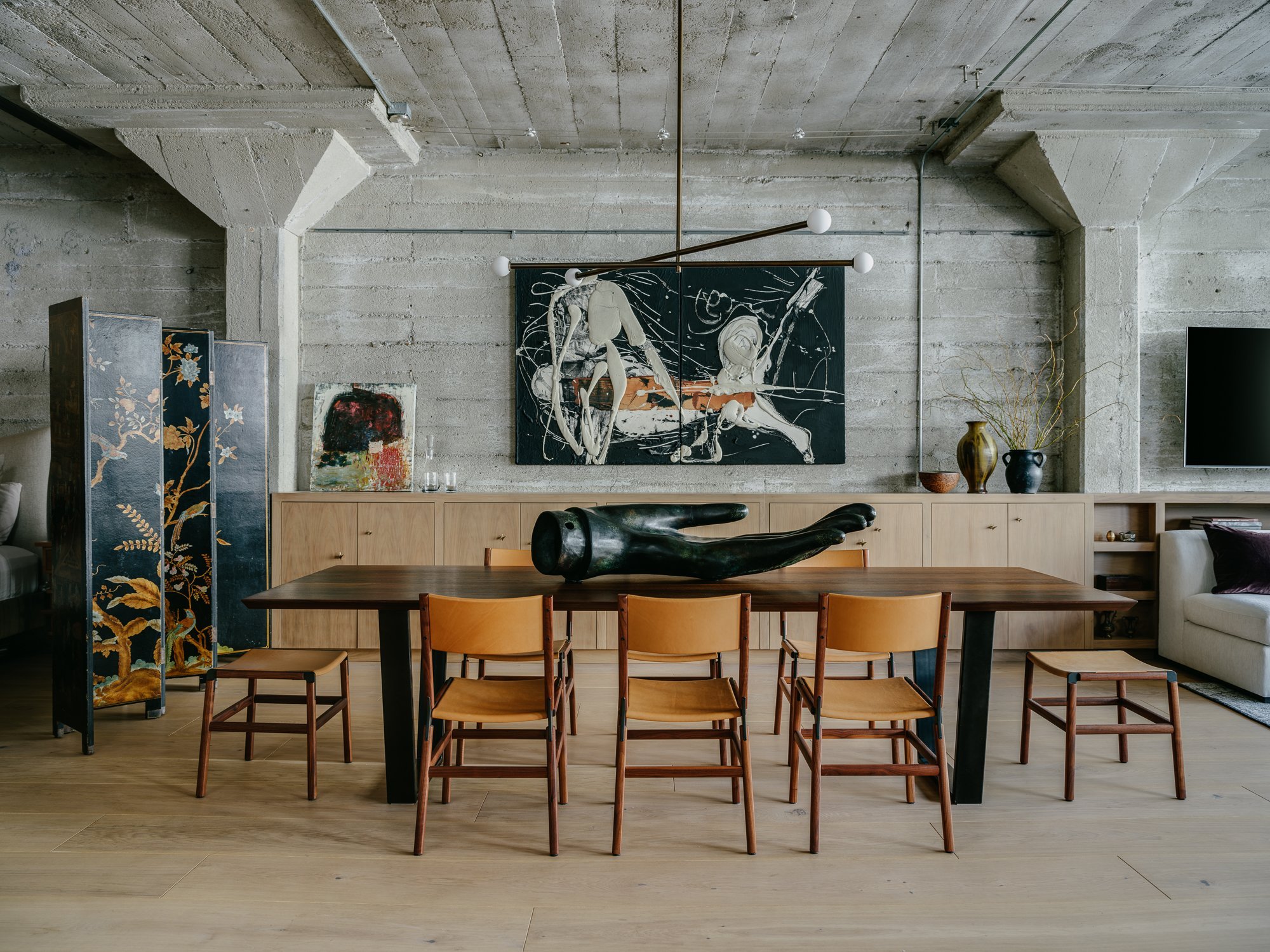Solid Foundations, Stunning Spaces: The Impact of Construction Fluency on Interior Design
From April 13-16, I had the honor of attending and speaking at the world's largest furniture market, High Point Market. The energy at S/24 Market was incredible with activities spanned over 11 million square feet of showrooms across downtown High Point, NC. With 2,000-plus exhibitors ranging from emerging makers to legacy furniture houses, there was something for everyone.
Alongside fellow panelists Lisa Shaffer of Lisa and Leroy, Suzanne Connor of Casatopia, and Jaclyn Isaac of Doni Douglas Designs, we shed light on challenges encountered by interior designers, regardless of location or project scale on the educational panel “Fluent In Construction.” During this session, I shared my insights and experiences on the importance of construction fluency for interior designers, and how it can help us deliver better project outcomes. I also discussed specific strategies and tips for developing construction fluency, such as the importance of on-site visits, clear communication with contractors, and continuous learning.
If you're an interior designer and lack fluency in construction, you might encounter challenges such as miscommunication with contractors, a limited understanding of construction processes, and difficulties ensuring work quality. We explored how developing construction fluency can help overcome these challenges and improve project outcomes.
I've found immense value in profoundly understanding the nuances of the construction process. This fluency allows interior designers to shape our approach to creating aesthetically pleasing spaces that are executed smoothly and built to last. Many skilled designers have discovered this truth through experience, and I'm eager to share insights from my journey
Why Being Fluent in Construction Matters
Understanding the construction phase equips interior designers with the tools to oversee every project detail, from inception to completion, while facilitating clear communication with contractors. For instance, seemingly small changes that a contractor or homeowner may suggest can have a domino effect that skews the overall budget and timeline. By addressing how these small changes can potentially impact the project in a major way, we are able to ensure that the project stays on course and doesn’t deviate from the original timeline and budget. This is just one example of how equipping myself with construction fluency has led to better results, less confusion, and a more collaborative environment, enhancing the overall project experience.
The Interplay of Design and Music: A Unique Approach
Like many interior designers, I transitioned from another career path into this field. My background is actually in opera performance. With time, I've found an interesting parallel between interior design and the world of opera. Both fields require a meticulous orchestration of countless elements behind the scenes to deliver a seamless, flawless final production.
In opera, countless rehearsals, costume fittings, set constructions, and more go into putting on each performance. However, the audience only sees the polished final product on stage. Similarly, in design, countless materials, contractors, schedules, and decisions have to come together cohesively. The client just gets to enjoy the beautiful result.
This is how I approach design projects. It's an organized yet creative process of harmonizing all the moving parts, all working together.
My Journey in Construction Fluency
So, when I initially entered the field, I had no formal education in design. I was reliant on my family background in construction and architecture. Later, an apprenticeship with a design-build firm provided a comprehensive education in the field. These early experiences were pivotal, teaching me what to do—and what to avoid. Cultivating partnerships that enhance learning and professional growth is so important. It’s not just about the knowledge—it’s about the opportunities and the doors that open for you.
The cornerstone of successful projects is the partnership between designers, architects, and builders. It's a collaborative effort where everyone's success is intertwined. I foster relationships with partners committed to quality and a unified vision because I want exceptional results. This collaboration enables more control to ensure precision, quality work, and ethical standards, emphasizing the importance of strong partnerships in our industry. And it hinges on all of us speaking the same language.
Involvement in the construction process allows me to control project details, ensuring the finished product aligns with the client's vision and quality standards.
Practical Tips for Navigating Construction Projects
When selecting construction partners, I am stringent and focus on quality and ethical practices. I understand I can say "no" to uphold standards, even when facing unreasonable client demands or subpar construction practices. Ensuring quality work and proper compensation is essential for both clients and contractors.
To navigate construction projects successfully:
I stay informed through meticulous documentation and attending crucial meetings. Being present during critical discussions avoids miscommunications.
I ensure clients consult builders before making decisions, as even small choices can have disastrous results later without professional consideration.
I embrace continuous learning by enhancing my construction understanding through every opportunity.
Learning and Adaptation: A Lifelong Process
Construction fluency is indispensable if you want to deliver beautifully designed and excellently executed projects. My journey illuminates designers' path to becoming more construction-proficient, ensuring better outcomes for our clients. Cultivating this knowledge allows us to harmonize aesthetics and construction for elevated spaces. However, it's important to remember that construction processes and materials are constantly evolving, so it's crucial to stay updated and adapt our practices accordingly. This is why I believe that learning and adaptation is a lifelong process for interior designers and a key part of developing construction fluency.



